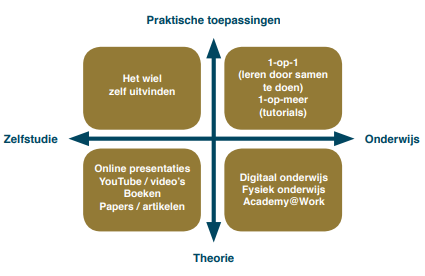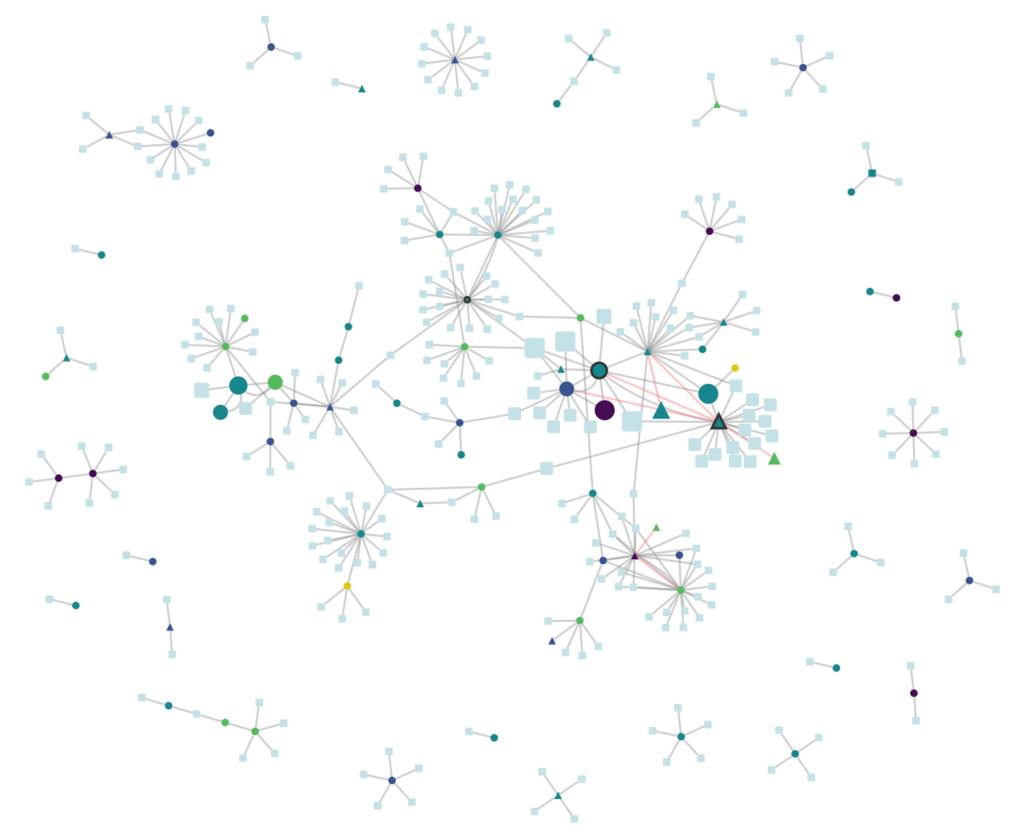The importance of learning, knowledge transfer, and personal development is well recognized by every organization. Especially in knowledge-intensive organizations, it can be the greatest source of competitive advantage.
In this blog, we show how we learn, and how this information can be used to design optimal knowledge networks.
Problem Statement
Many organizations pay attention to the knowledge development of their employees. This is not surprising, because in general, more knowledge, better performance.
Many organizations use a workforce planning tool for this purpose: it translates an organization’s strategic objectives into (future) required knowledge, experience and skills. But what is actually the most effective way of transferring knowledge? How do we ensure that employee knowledge levels are where they need to be as quickly as possible? To answer that question, we first consider different ways of learning.
How we learn
We distinguish four modes of learning and knowledge transfer (see Figure 1):
- Theoretical self-study. Everyone takes in knowledge independently from time to time, for example, through online presentations, videos, books, articles, papers, etc.
- Theoretical education. Theoretical education can take place both physically and online, and involves a “teacher” explaining something to his “students.
- Practical self-study. Practical self-study means figuring out for yourself how something works. Learning by doing, in other words.
- Practical education. This is perhaps the least visible form of knowledge sharing, but one of the most common. These include knowledge exchange between colleagues, tutorials, and working together on projects.

© 2021 DL Network Analytics BV
How we learn matters because it is the combination of theory and practice that leads to the improvement of skills:
Skill = Knowledge + Practice
The upper right corner of Figure 1 in particular (practical education) sometimes gets underexposed within organizations, probably because of its invisibility. This is a shame, because it is precisely this way of learning that is particularly effective and lasting; where you tend to forget the content of a paper quickly, the knowledge and skills you have accumulated by doing will stay with you for a long time.
Effective knowledge networks
A knowledge network is a network of people within which knowledge is actively shared, information and advice is sought, or ideas are shared. Figure 2 is an example of the knowledge networks within an organization. The colors indicate the age of the individuals. The size of the spheres (men), triangles (women), and squares (unknown) indicate how much influence the person has in the network, given their position. A thick border indicates that this person is an important intermediary between two subgroups.

Some key findings based on Figure 2 are:
- The knowledge networks often seem to be limited to their own environment (many loose elements are visible around the “hard core”).
- A number of individuals link the hard-core subgroups. Without these individuals, cross-pollination would no longer exist.
Understanding the knowledge networks and the resulting findings also immediately provide important guidance for improving the knowledge networks. For example, in the example, groups and new connections can be actively created to engage the loose subgroups with the hard core.
Summary
Employee knowledge level is where it needs to be as quickly as possible with:
- the proper use of learning resources, and
- effective knowledge networks within which those learning resources are deployed.
Indeed, well-functioning knowledge networks enable learning by doing together. And that, after all, is the most effective form of learning.
Want to learn more about how to improve knowledge sharing within your organization? If so, please contact us at info@qultify.com or make an appointment.













